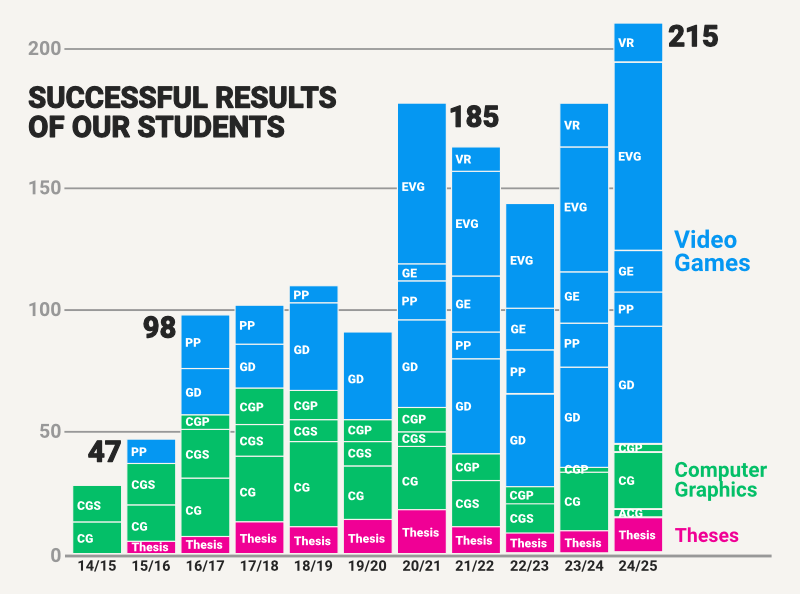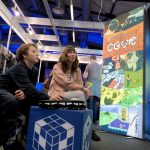We aspire to offer the best video game, virtual reality, and computer graphics development education in Estonia. In doing so we lay the path that people aspiring to make their careers in these fields can confidently follow.
Video game development is a multidisciplinary and lucrative industry, thriving in countries like Lithuania, Finland, and Sweden. There are many people who are inspired by video games at a young age to create beautiful digital worlds, heart‑touching experiences, and interactive computer software to facilitate their creativity. Currently, in Estonia, there are not many avenues for these people to pursue their passion and desired career path.
We envision a world, where this is not the case. Where a graduating high‑school student has an option to enroll at the University of Tartu in the field of video game development. Where the same person, now a student, learns everything important and necessary for developing any video game they desire. That student, after graduating, has all the skills and experience to start their career in an Estonian video game development company. In that company, they develop video games, which grow our culture and enrich the economy. The work is both highly creative and sufficiently challenging, the workload is both balanced and dynamic, the wages are comparable to regular software development wages. With an annual influx of aspiring and educated video game developers, the Estonian video game development industry grows and provides new stable careers to many.

Extended reality is another rapidly growing field in the global market. To keep the pace or even be the pacesetters ourselves, a solid educational path that ensures stable employment is needed. The students in the video game development curriculum who want to work with virtual reality platforms are welcome to do so on our provided modern virtual reality platforms. Thus they bolster their portfolios with the necessary experience to work in the extended reality field, be it virtual or augmented reality.
There are many more computer graphics applications besides video games and extended reality that our education prepares for. They can range from the game engine and graphics library or tool development itself to interactive experiences and applications like 3D wayfinders or even pre‑rendered CGI. These avenues open up many more stable career paths for our graduates.
Our Mission
We work to provide a higher education path for aspiring video game, virtual reality, and computer graphics developers.
For high-school students, we provide several annual online courses and offer field trips to the lab. To the students of the University of Tartu and its partner universities we have a number of video game, virtual reality, and computer graphics development higher education courses. We are working on a video game development Bachelor level curriculum made from these courses and more. To both beginners and advanced students, we organize three annual game jams. The lab rooms and hardware is for students to have a place and hardware for studying their field. We supervise our students in their graduation theses and we collaborate with companies to help connect our graduates with their aspired career paths.
Steady growth is important for us. Growth in the number of successful students from our courses, the number of courses itself, the number of our graduated thesis students – all these we steadily increase.

We value creative students and colleagues who are independent, communicative, have attention to detail, are at times light‑hearted, but also dedicated to their work. In teaching, we believe in collaboration – the educator is there to help every willing student learn as best they can. It is also our responsibility to provide our students with efficient study places and hardware they need for their thesis and course projects. We value quality.
Academia
It is our belief that quality teaching goes hand‑in‑hand with professional experience. That is why our educator staff includes some of the best professionals from the video game development, virtual reality, and computer graphics fields in Estonia.
To complement the tried‑and‑true textbook theory, our educators bring their practical experience with the newest technologies to our students via courses, consultation, thesis supervision, and joint research projects.

Better education and new insights for our students also come from working together with other educational institutions in Estonia. Sharing our differences and useful practices is what makes everyone succeed.


